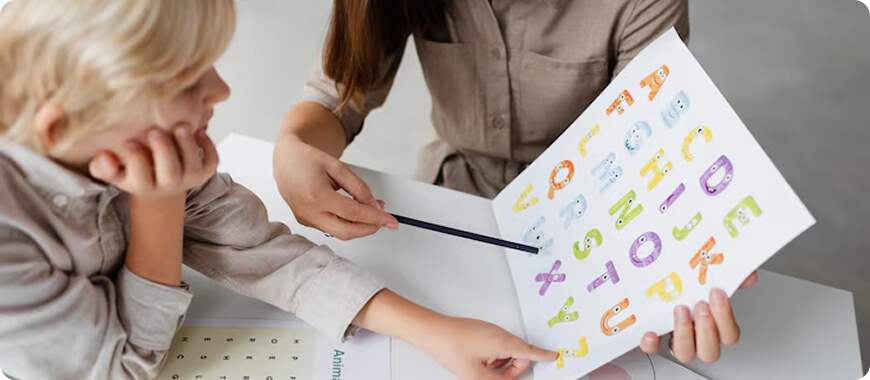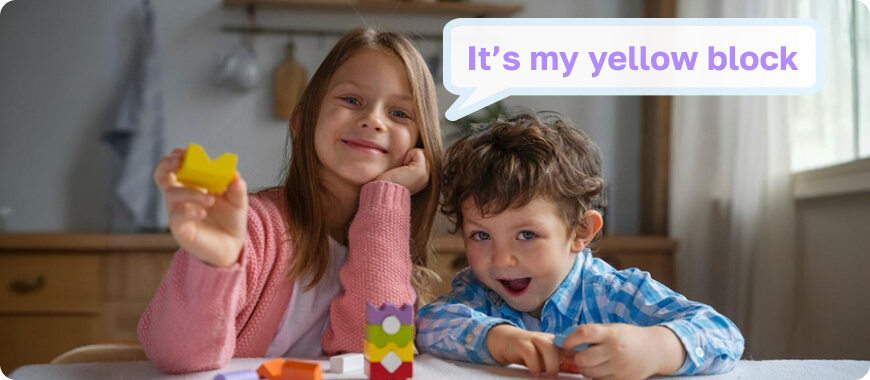Learning to speak clearly in English is one of the most important steps in a child’s language journey. But let’s be honest — pronunciation practice doesn’t have to be boring or frustrating.
With the right pronunciation exercises , children can improve their ability to say words clearly, understand native speakers better, and feel more confident when speaking. Whether you're a parent helping your child at home or a teacher looking for new pronunciation lessons , this guide will show you how to make English pronunciation practice both fun and effective.
Let’s explore why good pronunciation matters and how you can support young learners with creative, interactive methods like tongue twisters , rhyme time , and even phonetic charades !
Why Pronunciation Is Important for Young Learners
Pronunciation plays a key role in successful communication. When kids learn to pronounce words correctly , they are more likely to be understood by others, which boosts their confidence and encourages them to keep speaking. It’s not just about sounding “perfect” — it’s about making sure their message comes across clearly.
Here are two big reasons why how to improve english pronunciation should be part of every child's learning path:
Building Confidence in Speaking from an Early Age
Children who feel comfortable saying words the right way are more willing to join conversations, participate in class, and express themselves. Good pronunciation helps reduce frustration and embarrassment, especially when interacting with peers or native speakers.
When kids hear themselves speaking clearly, they start to believe in their own abilities — and that makes all the difference in their language learning journey .
How Good Pronunciation Supports Overall Language Development
Pronunciation isn’t isolated — it connects directly with listening, reading, and spelling skills. When children focus on the pronunciation of words , they become more aware of sounds and patterns in English. This awareness improves phonemic sensitivity, which is essential for reading fluency and comprehension.
Also, practicing pronunciation helps reinforce vocabulary. The more times a child says a word aloud, the easier it becomes to remember and use it naturally.
Top Fun and Effective Pronunciation Activities for Kids
Now that we know why pronunciation matters, let’s dive into our list of the best pronunciation games and activities for pronunciation that turn learning into laughter.
These ideas are perfect for classrooms, online lessons, or family time at home — and they all support how to develop english pronunciation in a joyful, memorable way.
1. Tongue Twisters Game – Practicing Tricky Sounds Playfully
Tongue twisters are short phrases designed to challenge specific sounds. They’re silly, fast-paced, and great for working on tricky consonants like “th,” “s,” or “l.”
Try repeating phrases like:
- Silly snakes silently slithering south.
- Peter Piper picked a peck of pickled peppers.
Make it a game by timing how many times your child can say the phrase without tripping over their tongue!
2. Sound Sorting Race – Recognizing Initial and Final Sounds
This activity helps children distinguish between similar sounds at the beginning or end of words. For example, sorting picture cards under "cat" vs. "cap" teaches them to pay attention to subtle differences in pronunciation.
You can do this with printed images, digital flashcards, or even homemade drawings. Turn it into a race and see how fast they can sort the words correctly!
3. Mirror Talk – Learning Mouth Movements Visually
Sometimes kids struggle with sounds because they don’t realize how their mouth should move. Using a mirror lets them watch their lips, tongue, and jaw in action.
Choose a target sound (like “th” or “r”) and model how to shape your mouth. Then ask your child to copy you while looking in the mirror. This visual feedback helps them adjust and improve their own pronunciation skills .
4. Shadowing Exercise – Imitating Native Speakers
Shadowing means repeating what someone else says as soon as they say it — almost like you're their shadow. It’s a powerful method used by language learners around the world.
Play a short audio clip from a children’s English video or podcast. Let your child listen once, then try to repeat each sentence immediately after the speaker. This builds rhythm, intonation, and real-life speaking habits.
5. Rhyme Time – Mastering Word Sounds Through Poetry
Rhyming poems are a classic way to teach phonics and pronunciation. Kids love the musicality of rhymes, and they help highlight vowel sounds, syllables, and stress patterns.
Read or recite simple rhymes together, such as:
- Twinkle, twinkle, little star,
- How I wonder what you are!
Then encourage your child to come up with their own rhymes using the same structure.
6. Picture Dictation – Combining Listening and Pronunciation Skills
This activity blends listening, speaking, and drawing. One person describes a picture using simple sentences (“There’s a red car next to a green tree”), and the other draws what they hear.
Afterward, compare the original and the drawn version. Did the listener understand and pronounce the words clearly? This fun exercise sharpens both listening comprehension and correct pronunciation .
7. Sing-Along Sessions – Improving Rhythm and Intonation
Songs are a natural way to learn pronunciation. Singing along to popular children’s songs exposes kids to correct stress, intonation, and rhythm in a fun and memorable way.
Try singing classics like:
- Head, Shoulders, Knees and Toes
- If You’re Happy and You Know It
Repeat lines slowly, then speed up and add actions to make it even more engaging.
8. Phonetic Charades – Acting Out Words to Reinforce Sounds
In this twist on the traditional game of charades, kids act out target words that focus on specific sounds. For example, if the word is “jump,” they jump. If it’s “run,” they pretend to run.
This kinesthetic approach helps connect movement with sound, reinforcing memory and pronunciation accuracy.
Tips for Parents and Teachers: Making Pronunciation Practice Engaging
Even the best pronunciation exercises won’t work unless kids enjoy them. Here are some expert tips to keep your little learner motivated and excited about improving their English pronunciation.
Keep It Short, Fun, and Repetitive
Young children have short attention spans, so keep sessions brief — around 10–15 minutes. Focus on repetition in a playful way, whether it’s singing a song three times or playing a quick round of tongue twisters.
The goal is to build muscle memory for speech without causing fatigue or frustration.
Use Visuals, Gestures, and Technology
Visual aids like flashcards, videos, and apps make pronunciation more tangible. Pairing a sound with a picture or gesture helps children remember it better.
Apps like Speechling or ELSA Speak offer interactive tools that guide kids through pronunciation step by step. And don’t forget to use hand motions — clapping for syllables or showing lip positions with your fingers.
Praise Efforts and Encourage Daily Practice
Celebrate small wins! Even if your child mispronounces a word, praise their effort and gently model the correct version. Positive reinforcement builds confidence and motivation.
Encourage daily practice by setting a routine — maybe a few minutes of rhyme time before bedtime or a sing-along during breakfast.
Keep It Light, Keep It Fun!
Improving pronunciation doesn’t need to feel like homework. When kids enjoy what they’re doing, they learn faster and retain more. Think of these English pronunciation for kids activities as brain-friendly games rather than drills.
Whether you’re playing a tongue twisters game , doing mirror talk , or dancing to a favorite tune, the key is to create a positive environment where mistakes are okay and progress feels rewarding.
Remember, how to improve pronunciation for kids is less about perfection and more about participation. The more your child speaks, listens, and plays with language, the more natural and clear their English will become.
Final Thoughts
Helping your child master English pronunciation doesn’t have to be difficult or stressful. With fun and creative english language pronunciation practice , kids can learn to speak clearly, confidently, and joyfully.
From tongue twisters to shadowing exercises, there are countless ways to improve your English pronunciation in everyday life. Whether you're using pronunciation games , songs , or interactive apps , the most important thing is to keep the experience engaging and supportive.
So go ahead — press record, grab a mirror, or just start singing. With regular practice and a lot of encouragement, your child will soon be pronouncing words like a pro!











